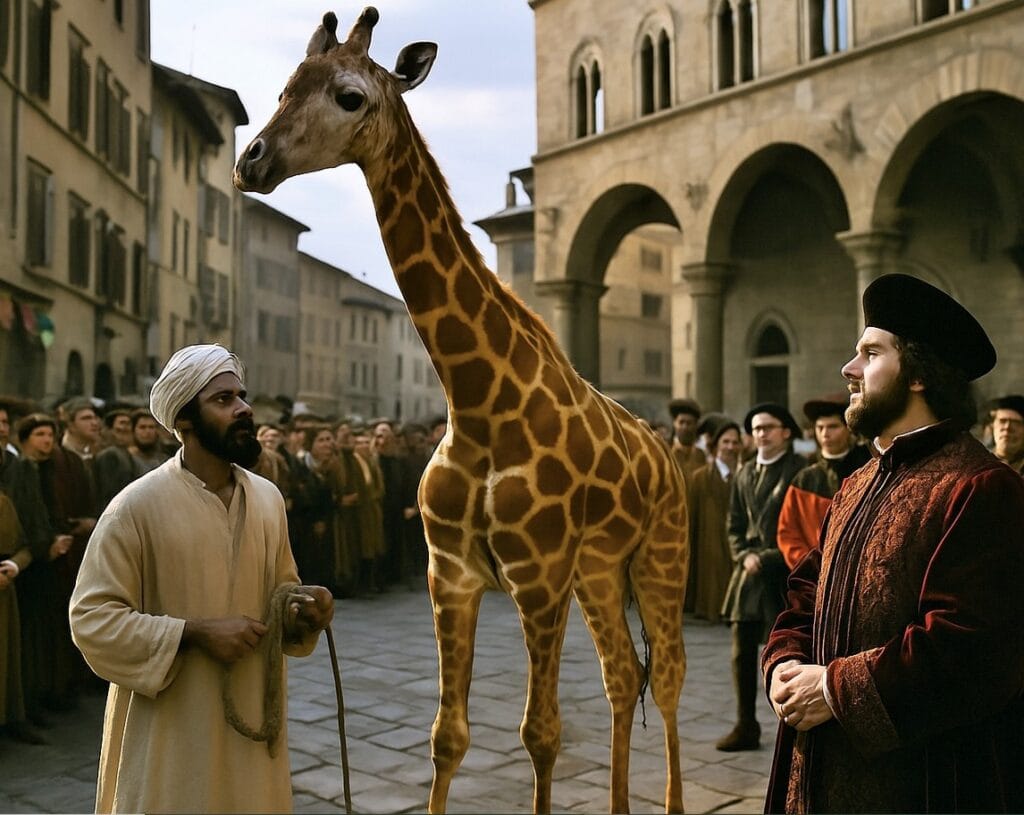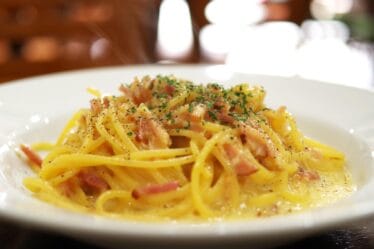

A Renaissance Spectacle Like No Other
On November 18, 1487, the streets of Florence came to a sudden halt. Crowds gathered in astonishment as a creature unlike any they had seen before — tall, slender, and with a neck that defied belief — made its entrance into the heart of the Renaissance city. It was the legendary giraffe of Florence, a diplomatic gift from the Egyptian ambassador Mohamed Ibn-Mahfuz to the powerful ruler Lorenzo de’ Medici, also known as Lorenzo the Magnificent.
This was far more than a simple exotic animal. In fact, it was a diplomatic marvel, a symbol of political charm and global power. No giraffe had set foot in Italy for centuries — the last one perhaps having walked the Roman Empire during Julius Caesar’s time. Thus, The Giraffe of Florence instantly became a symbol of wonder and prestige.
Lorenzo’s Political Vision: A Masterstroke of Renaissance Diplomacy
Notably, Lorenzo the Magnificent was not only a patron of the arts but also a master of realpolitik. He immediately recognized the immense symbolic value of The Giraffe of Florence. By accepting and showcasing this rare creature, he was echoing the grandeur of Ancient Rome, captivating the imagination of Florence’s citizens, and extending his influence on the European stage.
Moreover, Lorenzo even considered sending the giraffe to Anne of France (Anne de Beaujeu), regent of the French kingdom, as part of a diplomatic gesture to strengthen ties. This clever move shows how animals, especially exotic ones, were not just curiosities, but tools of soft power and international relations in the 15th century.
The Mystery Behind the Animal’s Origins
To this day, the exact origin of The Giraffe of Florence remains shrouded in mystery. While there is no concrete document confirming that it came directly from Sultan Qaitbay of Egypt, the context speaks volumes. Qaitbay — who ruled Egypt during this period — maintained several giraffes in his royal menagerie and was actively seeking allies in his struggle against the rising threat of the Ottoman Empire.
Lorenzo, ever the opportunist, had offered support to the Mamluk Sultan. In return, a giraffe — the very symbol of exotic prestige — appeared in Florence, causing a sensation and forever entering the city’s rich tapestry of history.
Florence at the Center of the World
For a brief moment in time, Florence was not only the epicenter of art, culture, and innovation, but also the stage for a fantastical display of diplomacy. The Giraffe of Florence embodied the merging of Renaissance sophistication with fairy-tale charm. It was a reminder of how the Medici family used spectacle and symbolism to enhance their political legacy.
In conclusion, The Giraffe of Florence was more than just a gift — it was a statement. A living monument to Lorenzo’s global vision, and a fascinating chapter in the story of Renaissance Italy.
Want to Learn More?
- Explore more about Lorenzo the Magnificent on Britannica.
- Read about the Diplomatic Gifts of the Renaissance from The Met Museum.
- Discover the History of Exotic Animals in Europe via National Geographic.



